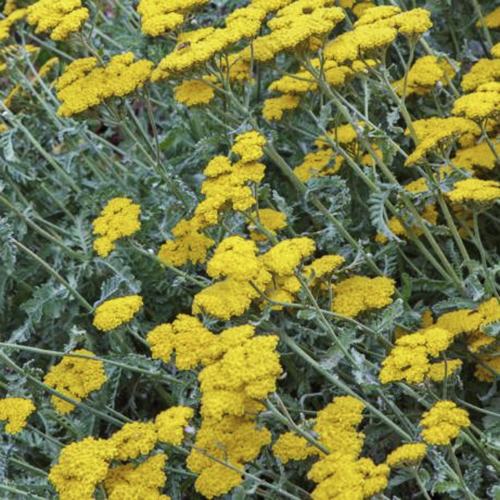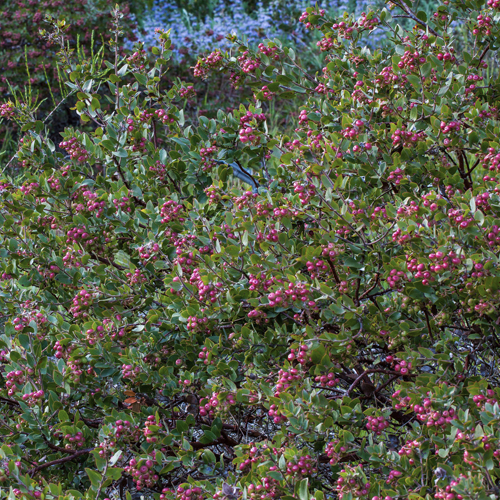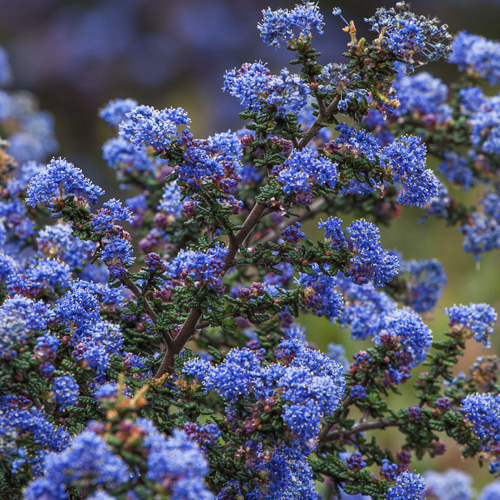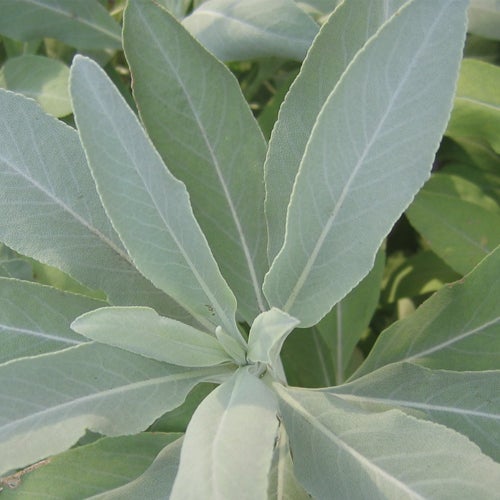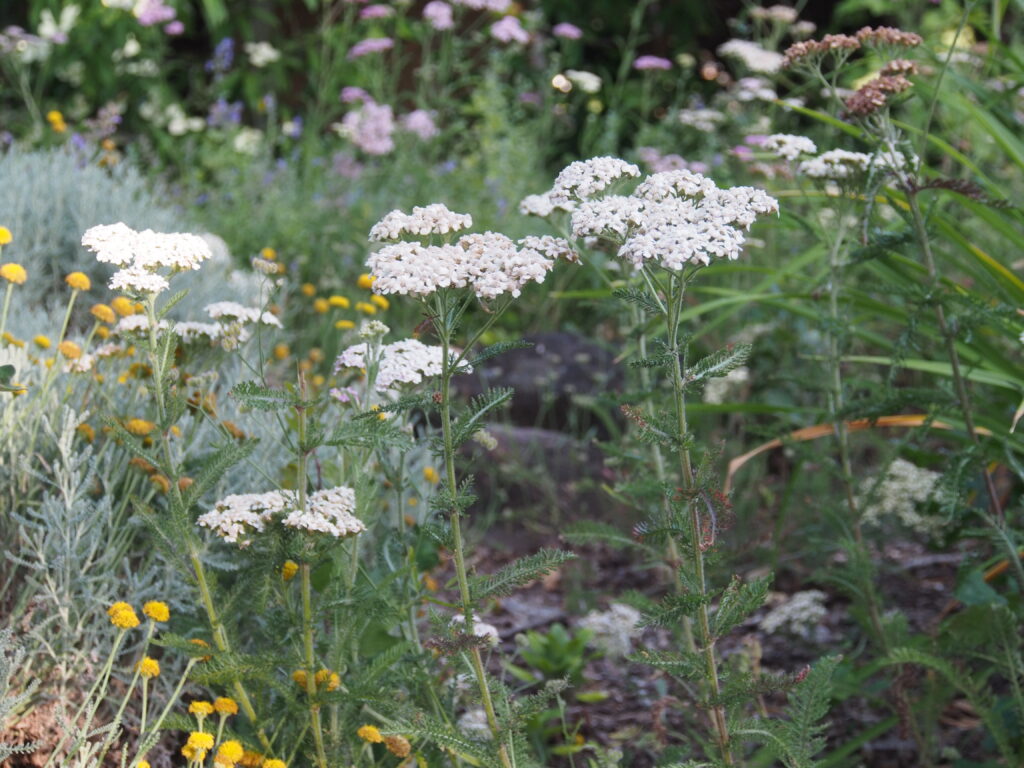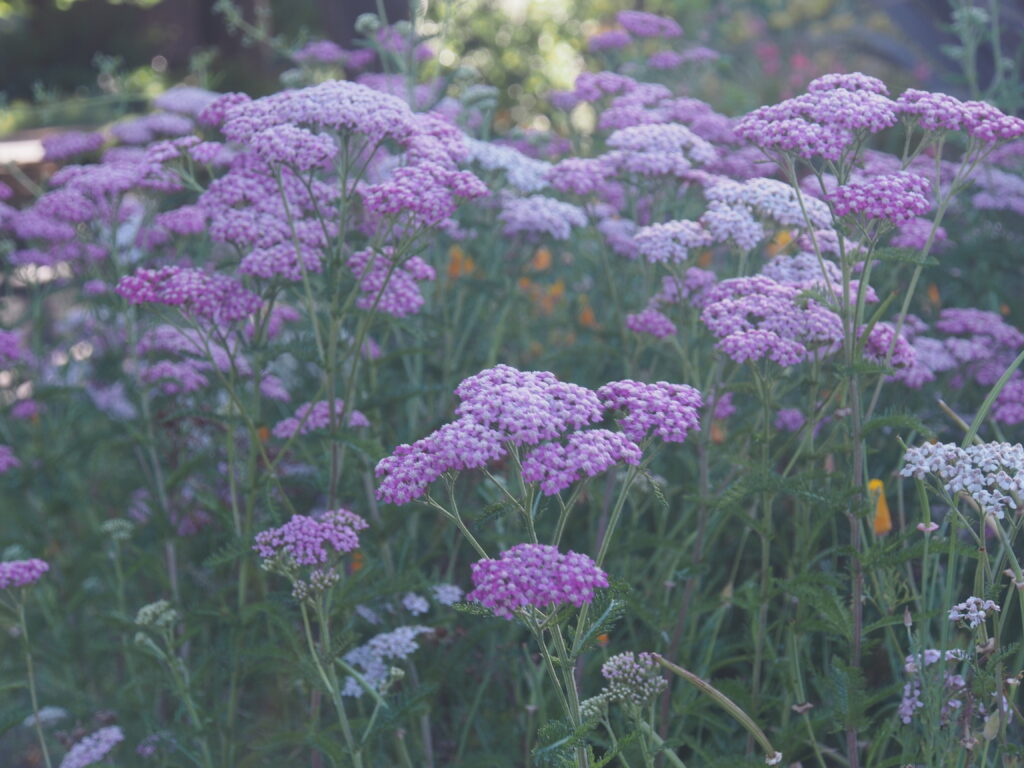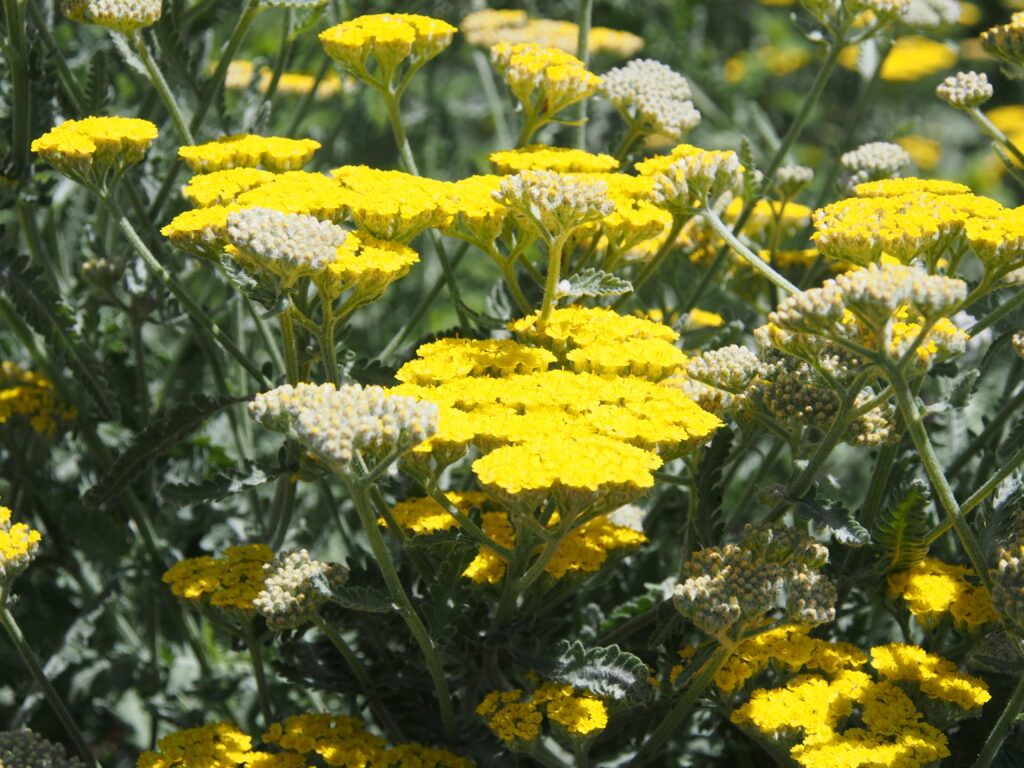Mill Valley Hillside Garden
BACK TO FULL TOUR
Garden Features
Drought Tolerant
California Natives
Deer Resistant
Drip Irrigation
Pesticide Free
Lawn-Free Landscaping
Wildlife Habitat
This hillside garden in Mill Valley is nestled between hills on the way to Muir Beach.
There are no fences and a pathway through the property where schoolchildren and wildlife walk through to get to the next road. The homeowners wanted a drought tolerant, deer-resistant garden with a design of year-round color. They also wanted to see birds, bees, butterflies and hummingbirds visiting the plants and trees.
The Gardener on this project is Alison Blume of Blume & Dean Landscape Design based in Novato. CA. She focuses on designing sustainable gardens that are drought tolerant, low maintenance and include many California Native Plants.
Choosing Plants
Privacy & Wildlife Habitat
For some screening the tall native Myrica Californica (Pacific Wax Myrtle) shrubs are pruned once a year. Their small flowers attract butterflies and their berries later provide food for birds that love to play within the branches.
There are evergreen coffeeberry shrubs under the oaks to feed local birds.
Many of the pollinators such as the Sticky Monkey flower (Diplacus aurantiacus) and Salvias provide nectar and seeds.
Drought Tolerance
The garden consists of several drought tolerant Mediterranean shrubs and plants that need a prune one to two times a year. They are evergreen and some have long blooming small flowers like the Westringia Blue Gem, lavender and the Cistus Rose.
Most of the plants are arranged in groups of 3, 5 or 7 for a consistent pattern along the garden path.
Natives
The native nectar plants include:
- Salvias
- Yarrow
- Sticky monkey flower
- groundcover Ceanothus
- Verbena de la Minna
- Arctostaphylos (manzanita pt. Reyes, Howard McMinn)
- fragrant Yerba Buena
- Ribes Sanguineam
- Matilija Poppy (Romneya Coulteri)
- Trichostema lanatum woolly blue curls
- Coyote mint pigeon point (groundcover)
- vibrant Flannel Bush (Fremontodendron Californicum).
Planning For Regional Seasons
The native groundcovers like Arctostaphylos emerald carpet and pacific sun provide year-round color and texture and add green in the Winter when many of the perennials go to sleep.
The native and ornamental grasses have deep roots perfect for hillside soil retention.
The variety of long blooming colorful salvias include Salvia Allen Chickering, Salvia Clevelandii, Salvia rigens, Salvia elegans, Salvia Waverly they are scattered throughout the garden to keep visiting hummingbirds fed.
Throughout the garden and in pots are succulents in varying colors and a popular bright green sedum.
Irrigation, Drainage & Dry Seasons
Drip Irrigation
The drip irrigation runs 2 to 3 times a week during the dry season for 8 minutes. The system is turned off during the Winter rainy months.
Hardscape & Drainage
The new hardscape pathway leads to a sitting area under a native oak. The path is permeable with square bluestone stepping stones surrounded by light-colored small Mexican pebbles. This pathway allows for water to flow slowly to the garden groundwater and keep the water on the land longer.
Fire Resistance
In between some of the plant groupings there are rocks and small boulders for soil retention, to cover bare spaces, act as a firebreak and provide habitat for salamanders and lizards.
As the fire experts recommend, I’ve created a “Zero Zone” by surrounding my house with a five-foot bed of river pebbles and removing all flammable materials away from the perimeter. It’s simple, it looks pretty good, and it’s both fire-resistant and drought-proof.
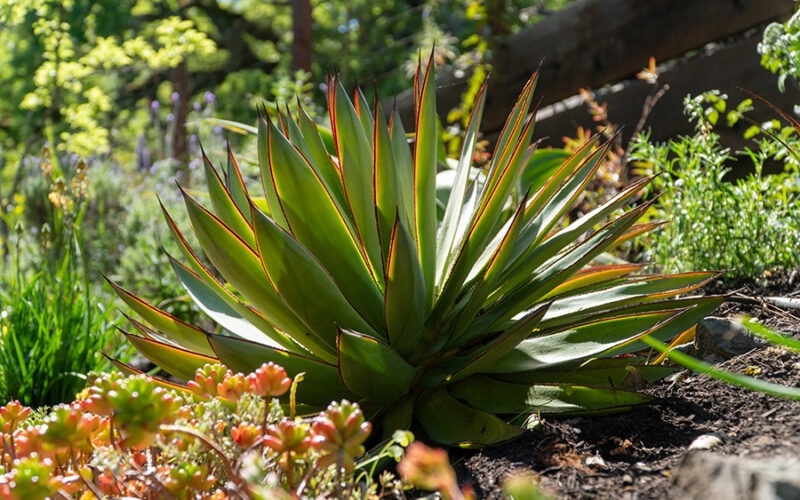
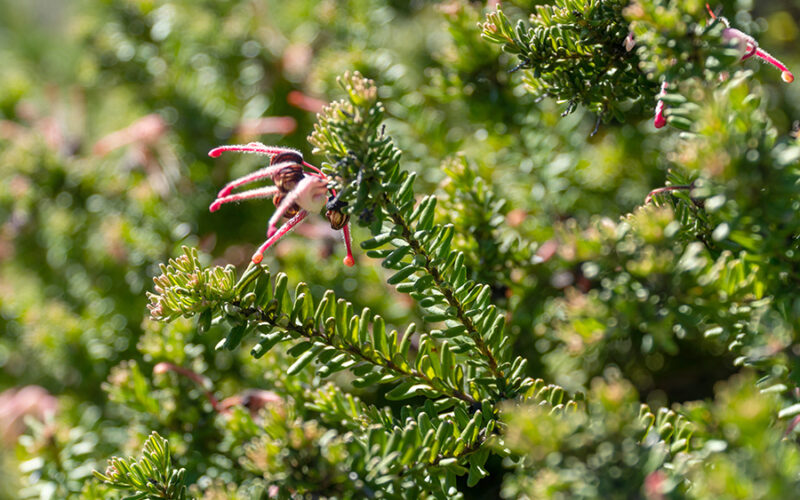
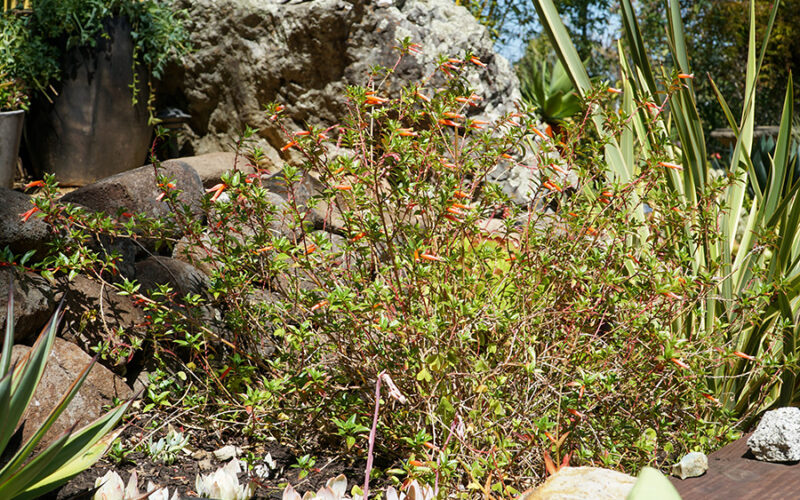
Plants in this Garden
Favorite Plants
Ribes sanguineum
Gardeners searching for easy, adaptable, and versatile shrubs should consider Ribes. They put on a good flower show, offer shelter and food for birds and other wildlife, and easily fill in those barren spots in the garden—as an understory plant or tall groundcover. Once established, they require minimal care other than a little water and occasional pruning
Heart's Delight
A coastal Marin County selection introduced by Phil Van Soelen, of California Flora Nursery, this produces long, drooping racemes of deep rosy pink blossoms. It is best with light shade in inland gardens.
King Edward VII
Large, vivid, bright red flowers appear in spring on stiff, upright stems. Drought tolerant once established, it flowers best in full sun but also grows well in part shade.
Verbena Lilacina De La Mina
This adaptable mounding perennial is a selection from Cedros Island. It produces mounds of delicate green foliage and has dark purple blossoms with lavender streaks and the blossoms are lightly scented. Though there are more flowers in the spring, this plant has blossoms throughout most of the year which attracts butterflies throughout the year. This small shrub grows to about about 2′ high and spreads to about 4′. It does best in well drained soils but will tolerate clay soil provided it isn’t over-watered. This is a very attractive and versatile plant for any flower border, butterfly garden or plant it in containers on a patio. To maintain a dense form shear lightly in summer, and remove spent flowers. The butterflies will flock to your garden! De la Mina Verbena was selected by Carol Bornstein and introduced by the santa Barbara Botanic Garden. Grows best in loamy, medium draining soil. Prefers sun in coastal sites, and part shade in inland sites. Selected for the garden; introduced by santa Barbara Botanic Garden.
Coffeeberry Mound San Bruno - Frangula Californica
The California Buckthorn is also called coffeeberry because its berries contain seeds which look like coffee beans. It is a fairly common plant native to California and southwestern Oregon. It is a dense evergreen shrub growing to 6-15 feet tall, with dark red branches. The leaves are an attractive dark green with reddish tint, 1-3 inches long, with a curl under at the edges.. The plant is prized more for its fruit, a berry 10-15 millimeters in diameter, which turn red, then purple and finally black over the summer. It is valued by birds. This plant is beautiful and easy to grow. It tolerates a wide variety of soil types, and likes either full sun or part shade. It is is OK with light summer water up to 2x per month. Coffeeberry has a dense form and is easy to prune. It makes a great and fire resistant hedge. There are six subspecies, some of which are restricted to certain parts of its range or certain growing requirements. There are also a number of horticultural varieties including ‘Eve Case’ and ‘Mound San Bruno’.
Favorite Garden Suppliers
Cal Flora Nursery
2990 Somers Street Fulton
Emerisa Gardens Nursery
555 Irwin Lane Santa Rosa
Marin Landscape Materials
7596 Redwood Boulevard Novato
American Soil & Stone
2121 San Joaquin Street Richmond
Pini Hardware
1535 South Novato Boulevard Novato
